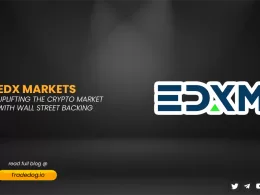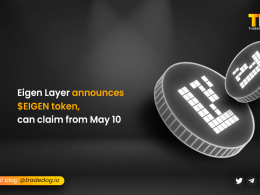Quick Links
Over the past few years, blockchain technology has been making waves in the financial world and many investors are now considering blockchain-based bonds as a viable investment option. In simple terms, a blockchain bond is a form of debt security that is created and managed on a distributed ledger system. These bonds are often referred to as “smart bonds” because they can be programmed with various parameters and restrictions.
What are Bonds?
Before diving into blockchain-based bonds, it’s important to understand what bonds are. They are a type of debt security that is issued by companies or governments as a way to raise funds. When an investor buys a bond, they are essentially lending money to the issuer, who promises to pay back the principal plus interest over a set period of time. Bonds are a popular investment because they provide a steady stream of income and are generally less volatile than stocks.
Traditional bond issuance
Traditionally, bonds are issued and traded through banks and financial institutions. The process involves multiple intermediaries, including underwriters, clearing houses, and custodians. These intermediaries help to ensure that the bond is properly issued and traded, but they also add to the complexity and cost of the process.
Furthermore, the current system is not very transparent, and investors often have limited access to information about the bonds they are investing in. This lack of transparency can make it difficult for investors to make informed decisions and can lead to distrust in the bond market.
How do Blockchain based bonds work
Following steps are required to issue blockchain-based bonds: First tokenized version of a blockchain bond is released onto a digital asset ledger. The bond issuer then signs off on a digital term sheet that was created by an investment bank as part of a smart contract. Investor offers and orders are noted in the master book. Investors are added to the bond’s blockchain by the issuer using Know Your Customer (KYC) information given by a gatekeeping intermediary. The value of an investor’s portfolio is calculated using tokens that stand in for money or securities. After signing, the agreement gets its financial closure. Banks then transfer funds or debt instruments to the recipient accounts, acting as token keepers.
Advantages of Blockchain Bonds
The main advantages of blockchain bonds are their potential for more effective compliance and faster settlement time. By utilizing distributed ledger technology, bond issuers can track a bond’s progress from issuance to maturity in real-time, providing greater transparency and security. Additionally, blockchain bonds can be structured in such a way that the bond issuer can ensure compliance with all applicable regulations more quickly and easily than was previously possible.
By utilizing smart contract technology, blockchain bonds may also provide greater efficiency when it comes to the settlement process. Smart contracts allow the parties involved in the transaction to pre-define the conditions of the agreement, which results in faster transactions since all parties involved are able to approve them with minimal effort. Smart contracts also help minimize the possibility of fraud or errors since they are automatically executed when certain conditions are met.
Blockchain-Based Bonds Adoption
The World Bank is one of the organizations that has recognized the potential of blockchain bonds and has been actively involved in promoting their use. In August 2018, the World Bank issued its first bond using blockchain technology, which was called a bond-i (Blockchain Operated New Debt Instrument). The bond-i was issued on the Ethereum blockchain, which is one of the most widely used blockchain platforms.
The bond-i was a two-year bond that raised AUD 110 million, and it was the first time that the World Bank had issued a bond on a blockchain platform. The bond-i was issued using a private Ethereum network, and the World Bank partnered with the Commonwealth Bank of Australia (CBA) to manage the issuance of the bond.
Siemens is another organization that has recognized the potential of blockchain bonds and has been involved in their development. In 2019, Siemens partnered with Commerzbank to issue a bond on the blockchain, which was called a Schuldschein. The Schuldschein was issued using the Corda blockchain platform, which is designed specifically for financial services.
The Siemens bond was a five-year bond that raised €100 million, and it was issued using a private Corda network. The bond was oversubscribed, which indicated strong investor interest in blockchain bonds.
Conclusion
In conclusion, blockchain technology has the potential to revolutionize the bond market by increasing transparency, reducing costs, and increasing security. By using smart contracts to issue and trade bonds, intermediaries can be eliminated, and all parties involved in the bond issuance and trading process can have access to the same information in real time. Blockchain-based bonds also have the potential to be more secure than traditional bonds, as once a transaction is recorded on the blockchain, it cannot be altered. Furthermore, the use of blockchain technology can increase efficiency in the bond market, reducing the time it takes for investors to receive their returns. As blockchain technology continues to develop, it will be interesting to see how it can be further applied to the finance industry and what other innovative solutions it can offer.












